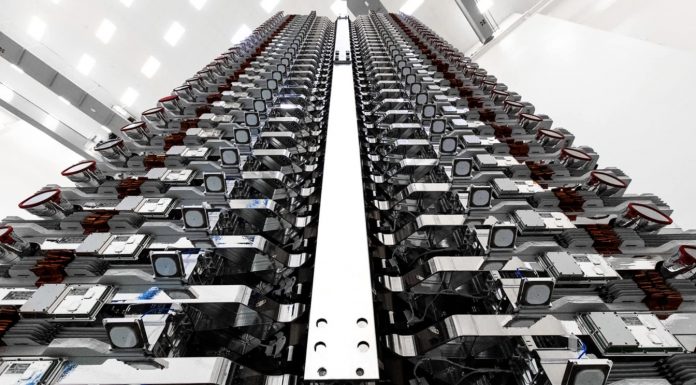
By James Palmer*
AUKUS is reshaping Australia’s strategic future, but its vision is incomplete. While the partnership’s first two pillars focus on submarines and advanced technologies, they rely on an often overlooked domain: space. If AUKUS is to deliver on its promise of deterrence, sovereignty and regional stability, AUKUS must urgently establish a third pillar dedicated to space. (From The Strategist. The Australian Strategic Policy Institute.)
Space is no longer a benign domain. It has become congested, contested and increasingly weaponised. China and other state actors’ proliferation of counter-space capabilities—including anti-satellite weapons, jamming systems, and spoofing technologies—has transformed space into a frontline of modern conflict. The satellites that provide secure communications, intelligence, surveillance and positioning, navigation and timing services are now high-value military targets.
Submarines of the future AUKUS fleet will require persistent, secure satellite links for mission success. Without access to assured space capabilities, they risk strategic isolation. The advanced systems under Pillar Two—from unmanned undersea vehicles to hypersonic glide weapons—are equally dependent on real-time space-enabled data, machine-learning updates from orbit and reliable space domain awareness.
An AUKUS Pillar Three would provide a formalised trilateral framework for strategic space collaboration. This would go beyond symbolic cooperation. It would integrate national launch infrastructure, enable shared investment in satellite constellations, harmonise regulatory and licensing standards and build trusted pathways for secure data exchange. In doing so, it would elevate space to its proper status—not a support enabler, but a strategic foundation.
For Australia, this is more than theoretical. National launch capacity is now a matter of national security. Spaceports, such as Atakani, which is under development in Cape York, are not simply commercial gateways; they are strategic assets that provide launch redundancy, operational resilience and a critical hedge against supply chain disruptions. Just as northern Australia is being reconceived as a defence logistics hub, so too must we see our geography as central to a sovereign space capability.
This new pillar would also unlock greater collaboration with other trusted partners. Japan, which is exploring deeper defence engagement through a J-AUKUS model, brings unique strengths in space situational awareness and lunar systems. Canada’s role in the North America Aerospace Defense Command has long positioned it at the centre of North American space defence. France, South Korea and India all bring complementary strengths—from sensors to dual-use research and development. By adopting a modular, interoperable approach, Pillar Three could facilitate plurilateral engagement while maintaining strategic cohesion among the AUKUS partners.
Beyond hardware, space resilience requires policy, regulation and trust. The current US export control regime, built around the International Traffic in Arms Regulations and the Arms Export Control Act, is no longer fit for purpose. These frameworks were designed for the Cold War, not the dynamic requirements of 21st-century allied innovation. They slow collaboration, create friction and stifle trust. If AUKUS is to succeed in space, members must create a new framework—something akin to a space trade authorisation mechanism—to streamline secure technology exchange and enable joint industrial development.
There is also a significant economic justification. The global space economy is projected to exceed $1 trillion a year by 2040. Space investment doesn’t just deliver launch vehicles and satellites; it drives innovation in manufacturing, materials science, cybersecurity, and science and technology workforce development. With the right policy and investment levers, AUKUS partners can reduce dependence on single-vendor commercial providers, build sovereign capability and develop export-facing industries that strengthen economic security while supporting strategic resilience.
But deterrence is still the primary justification. AUKUS resulted from the recognition that the Indo-Pacific is entering a period of unprecedented strategic volatility. Space is not separate from that volatility; it is central to it. As tensions rise, the distinction between civilian and military space assets is eroding. Dual-use technologies, the leveraging of commercial satellites for military operations, and the increasing vulnerability of orbital infrastructure all point to the same conclusion: without trusted, sovereign and interoperable space capabilities, the rest of AUKUS risks failure.
Australia is uniquely positioned to lead this charge. We have the geography, the regulatory framework, the political alignment and an emerging launch ecosystem. What is needed now is a clear political commitment to operationalise a spaced-focused pillar of AUKUS. This is not just an opportunity to build satellites or launch rockets; it’s a chance to create the architecture for 21st-century deterrence.
The high ground of the 21st century is orbital. If AUKUS is to deliver on its strategic promise, it cannot afford to leave that high ground undefended. Pillar Three must be the next step, not an afterthought.



